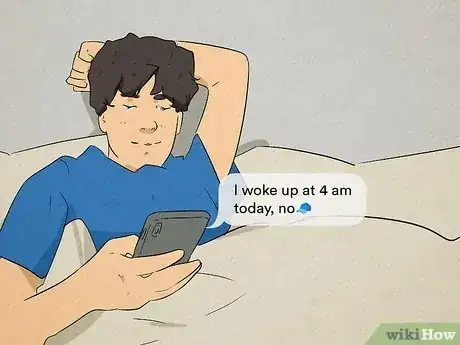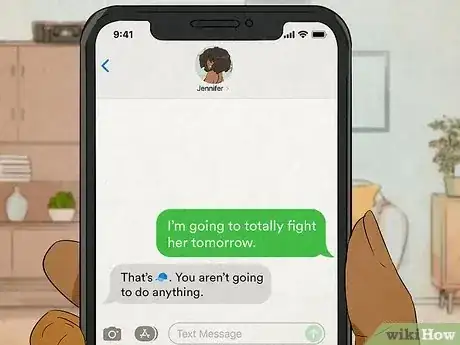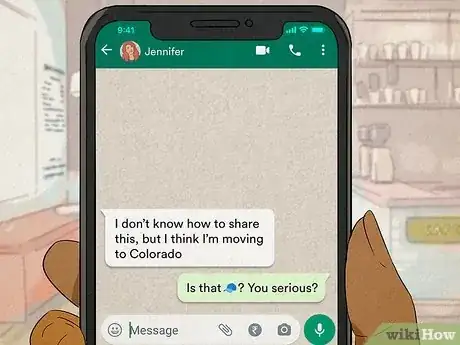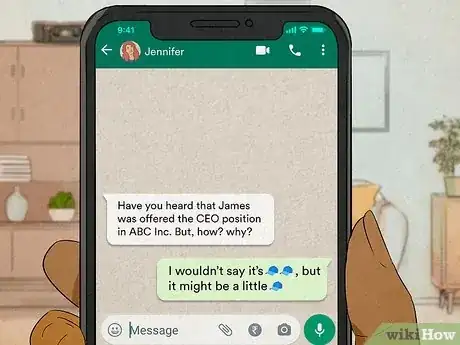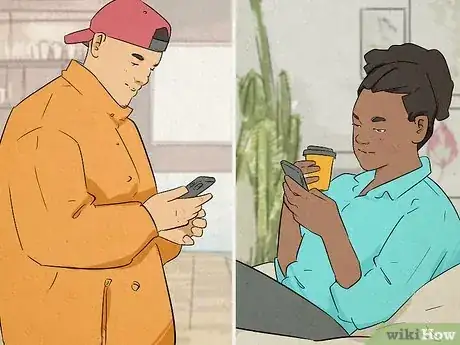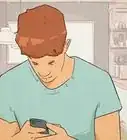This article was co-authored by wikiHow staff writer, Eric McClure. Eric McClure is an editing fellow at wikiHow where he has been editing, researching, and creating content since 2019. A former educator and poet, his work has appeared in Carcinogenic Poetry, Shot Glass Journal, Prairie Margins, and The Rusty Nail. His digital chapbook, The Internet, was also published in TL;DR Magazine. He was the winner of the Paul Carroll award for outstanding achievement in creative writing in 2014, and he was a featured reader at the Poetry Foundation’s Open Door Reading Series in 2015. Eric holds a BA in English from the University of Illinois at Chicago, and an MEd in secondary education from DePaul University.
This article has been viewed 23,941 times.
Learn more...
Did someone drop a 🧢 (blue hat) emoji out of nowhere? Confused by what they mean? We’ve got you covered! This is a unique emoji that’s got a few applications, but it’s easy enough to figure out how it’s used. In this article, we’ll cover what the 🧢 (blue hat) emoji means, how it’s used, and how you might reply to it.
Steps
What does the 🧢 (blue hat) emoji mean?
-
The 🧢 emoji means “cap,” which is slang for “lie.” When you see the 🧢 emoji, just replace it with the word “cap” (if it works like a noun), or “capping” (if it functions like a verb). Cap is popular slang to mean “lie,” while capping means “lying.”[1] X Research source
- As a noun, someone might say “That’s 🧢” (i.e. “That’s a lie”). As a verb, someone could say, “You’re 🧢” (i.e. “You’re lying”).
- Someone saying, “I woke up at 4 am today, no 🧢” is basically saying, “I’m not lying about getting up at 4 am.”
- If you text someone, “I heard you asked Melissa out,” they might reply, “That’s 🧢, I barely even talk to her” to indicate that’s not true.
- The 🧢 emoji can also work on its own. If you say, “I actually can’t stand rock music,” someone might just say, “🧢?” as if to say, “Are you lying?”
- As a note, this emoji is rarely used in an aggressive or accusational way. It’s more of a “haha, you’re full of it” kind of thing.
How do you use the 🧢 (blue hat) emoji?
-
1Try using the 🧢 emoji to call someone out for lying. This usage of the 🧢 emoji is the most popular. You simply use the 🧢 the same way you’d say something like, “You’re full of it,” or, “That’s a lie,” in a super non-confrontational way. You might have a convo like:
- Them: “I’m going to totally fight her tomorrow.”
- You: “That’s 🧢. You aren’t going to do anything.”
-
2You might use “no 🧢” to say “I’m serious.” You can also change the meaning of the emoji by throwing a “no” in front of it to express conviction or emphasize severity. This is sort of like saying, “I’m not kidding,” or, “100% seriously.”[2] X Research source You might say:
- “I’m buying a car this summer, no 🧢.”
- “This might seem like 🧢, but it’s no 🧢. I just got into college.”
- “Did you know I’m getting an A in physics? No 🧢.”
-
3You could employ the 🧢 emoji to ask, “Seriously?” If you aren’t sure whether someone is telling the truth or not and you kind of want to ask if they’re fibbing in a super casual way, you can use the 🧢 emoji. This is a bit of a fringe usage, but you might use it to question authenticity.
- Them: “I don’t know how to share this, but I think I’m moving to Colorado.”
- You: “Is that 🧢? You serious?”
How do you respond to the 🧢 (blue hat) emoji?
-
1You might tell them that you’re really telling the truth. If someone throws a 🧢 your way to imply that you aren’t telling the truth, respond by telling them that you’re being honest. They probably aren’t being aggressively accusational (since they wouldn’t use an emoji for that), so feel free to have some fun with it. You might say:
- “No! No 🧢 at all. I really am going to get the new Jordans.”
- “I’m super serious.”
- “What do you mean 🧢?! I’m telling the truth.”
-
2You could admit that you’re exaggerating just a bit. If you are trying to pull someone’s leg, you could own up to it that you’re not being 100% honest. If you were just being a little hyperbolic, you can play it off like you were just messing around. You might say:
- “Ok ok, you got it. That was 🧢”
- “I wouldn’t say it’s 🧢 🧢, but it might be a little 🧢.”
- “Yeah, you got me. I’m just messing around.”
Why does “cap” mean “lie?”
-
We don’t know why, but it’s an old-school slang term in hip hop. The origin of “cap” goes all the way back to Southern rappers from the mid-1980s, and it’s an example of “playing the dozens”—a playful form of back-and-forth insulting in certain African-American subcultures. It’s unclear where the connection between “cap” and “lying” comes from, but the term “cap” has been used this way for a long time.[3] X Research source
- “Cap” can also more generally mean “limit” (i.e. market cap, salary cap), so “no cap” can also be interpreted as “no limit.”
You Might Also Like
 What Emojis Mean Sex?
What Emojis Mean Sex?
 How to Use & Reply to the 🤌 Italian Hand Emoji
How to Use & Reply to the 🤌 Italian Hand Emoji
 What Does <3 Mean on Social Media?
What Does <3 Mean on Social Media?
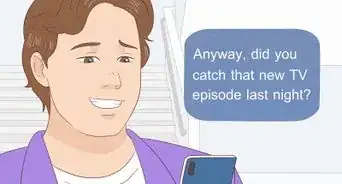 What Does the 🙃 Upside Down Emoji Mean?
What Does the 🙃 Upside Down Emoji Mean?
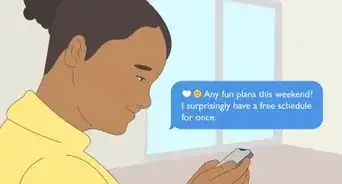 What Does the 🤍 White Heart Emoji Mean?
What Does the 🤍 White Heart Emoji Mean?
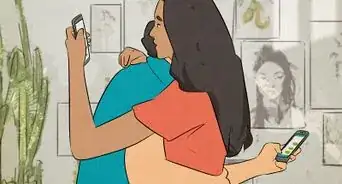 What Does the 🤗 (Hugging Face) Emoji Mean?
What Does the 🤗 (Hugging Face) Emoji Mean?
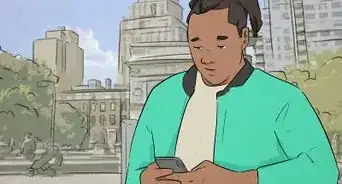 What Does the Melted Face Emoji 🫠 Mean?
What Does the Melted Face Emoji 🫠 Mean?
 What Does the 👅 Tongue Emoji Mean?
What Does the 👅 Tongue Emoji Mean?
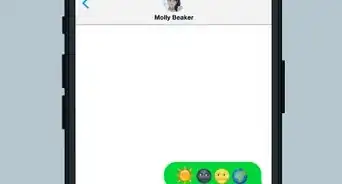 What Does the 🌚 Black Moon Emoji Mean?
What Does the 🌚 Black Moon Emoji Mean?
 What Does the 😇 Angel Emoji Mean?
What Does the 😇 Angel Emoji Mean?
 What Does the 💚 Green Heart Emoji Mean?
What Does the 💚 Green Heart Emoji Mean?
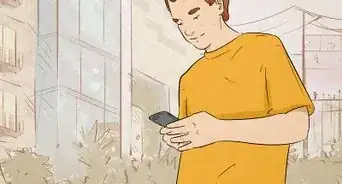 What Does the 💀 Skull Emoji Mean?
What Does the 💀 Skull Emoji Mean?
 What Does the 💙 Blue Heart Emoji Mean?
What Does the 💙 Blue Heart Emoji Mean?
 What Does the ⭐✨ Star Emoji Mean?
What Does the ⭐✨ Star Emoji Mean?
References
About This Article

